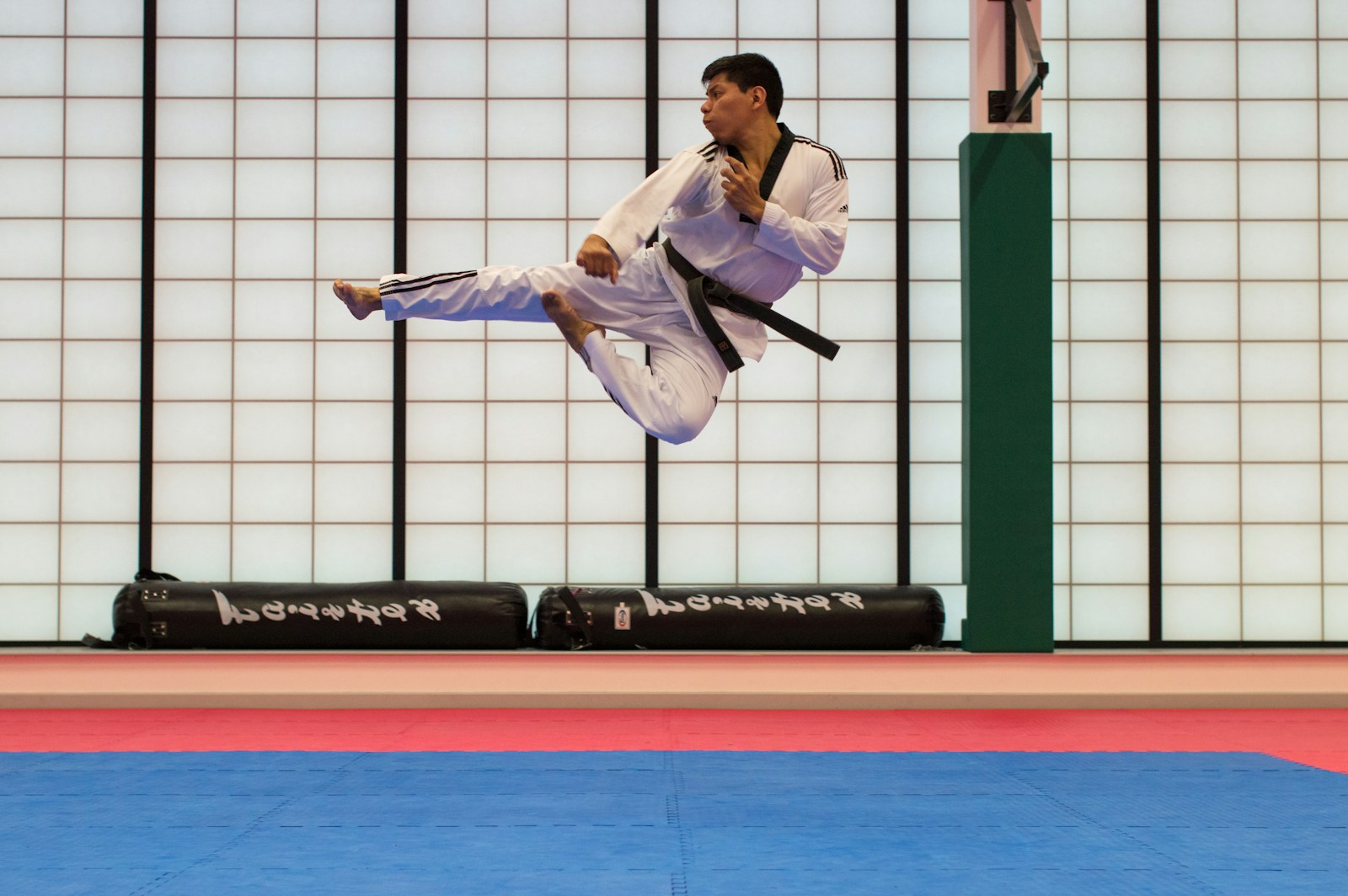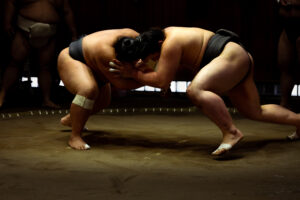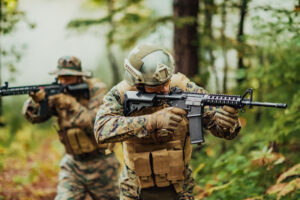In the expansive world of martial arts, karate stands out as a beacon of discipline, strength, and tradition. Originating from Japan, this time-honored martial art has traversed borders, influencing millions worldwide. Karate, meaning "empty hand" in Japanese, emphasizes self-defense, moral integrity, and personal development. As we delve into the depths of karate’s rich history, evolving styles, and philosophical underpinnings, we uncover a cultural phenomenon that transcends mere physical prowess. From its origins in Okinawa to its celebrated status in the Olympics, karate’s journey is a testament to its enduring appeal and transformative power.
The Origins of Karate: A Journey Back in Time
Karate’s roots can be traced back to the Ryukyu Kingdom, now Okinawa, Japan, where it developed as a synthesis of indigenous fighting techniques and Chinese kenpo. The art evolved as a means for unarmed peasants to defend themselves against armed bandits and oppressive samurai. Key figures such as Sokon "Bushi" Matsumura played pivotal roles in shaping early karate, blending various martial arts elements into a cohesive system. The practice was shrouded in secrecy, passed down through generations within families or from master to disciple. By the 20th century, karate masters began spreading their knowledge beyond Okinawa, setting the stage for its global dissemination.
The Evolution of Karate: From Okinawa to the World
Karate underwent significant transformation as it moved from the secluded islands of Okinawa to mainland Japan and eventually across the globe. Gichin Funakoshi, known as the father of modern karate, was instrumental in this transition. He introduced karate to Tokyo in 1922, adapting the art to appeal to Japanese martial traditions and educational systems. This period saw the standardization of techniques, introduction of the dojo system, and the inception of karate as a sport. International interest sparked in the post-World War II era, thanks to US servicemen stationed in Japan. Today, karate boasts millions of practitioners worldwide, a testament to its adaptability and universal appeal.
Karate Styles Explained: Understanding the Differences
Karate is not a monolithic art; it comprises several styles, each with its unique characteristics, techniques, and philosophies. The four major styles are Shotokan, Wado-ryu, Shito-ryu, and Goju-ryu. Shotokan, founded by Gichin Funakoshi, emphasizes long stances and powerful linear movements. Wado-ryu, created by Hironori Otsuka, blends jujitsu principles, focusing on body shifting and evasion techniques. Shito-ryu, established by Kenwa Mabuni, is known for its diverse kata and combination of hard and soft techniques. Goju-ryu, developed by Chojun Miyagi, incorporates breathing and conditioning exercises, reflecting its name, meaning "hard-soft style." These styles represent karate’s rich diversity and its practitioners’ varied philosophies and physical expressions.
The Philosophy Behind Karate: More Than Just Fighting
Karate is deeply rooted in a philosophy that transcends physical combat. The Dojo Kun, or training hall oaths, articulate values such as integrity, respect, courage, honor, and self-control. Karate practice is as much about refining the character and spirit as it is about honing the body. It teaches humility, perseverance, and the importance of constant improvement, encapsulated in the concept of "Karate-Do" or "the way of karate." This philosophical depth makes karate not just a method of self-defense but a path to personal enlightenment and societal contribution.
Karate in Popular Culture: From Films to Olympics
Karate has made a significant impact on popular culture, with movies like "The Karate Kid" series introducing the art to global audiences. Icons such as Bruce Lee, although primarily associated with kung fu, helped popularize karate through his films and philosophy. The discipline’s inclusion in the 2020 Tokyo Olympics marked a historic moment, showcasing karate on the world’s largest sporting stage. This recognition is a testament to karate’s widespread appeal and the respect it commands as a competitive and cultural practice.
Training Regimen: Inside a Karate Dojo
A karate dojo is where practitioners, or karatekas, learn and refine their art. Training regimens vary by style and school but generally include kihon (fundamentals), kata (forms), and kumite (sparring). Kihon drills develop basic techniques, stances, and movements. Kata are choreographed patterns of movements simulating combat situations, serving as a bridge between technique and application. Kumite ranges from pre-arranged drills to free sparring, applying techniques in dynamic contexts. Training also emphasizes mental discipline, focusing on concentration, breath control, and meditative practices.
Belt System Demystified: The Path to Black Belt
The karate belt system symbolizes a practitioner’s rank and proficiency, progressing from white to black. Beginners start with a white belt, representing purity and potential. As karatekas advance, they earn belts of different colors, each signifying a deeper level of knowledge, skill, and spiritual growth. The journey to black belt is long and challenging, requiring years of dedicated practice. Achieving a black belt is not an end but a new beginning, marking a commitment to continual learning and self-improvement.
Karate Masters Through the Ages: Legends and Pioneers
Karate has been shaped by numerous masters and pioneers, each contributing their unique insights and techniques. Figures such as Sokon Matsumura, Gichin Funakoshi, Chojun Miyagi, and Kenwa Mabuni are revered for their foundational roles in developing and disseminating karate. More recent masters like Mas Oyama, founder of Kyokushin Karate, are celebrated for their innovations and charismatic teaching. These legendary figures are not just remembered for their martial prowess but for their philosophical contributions to karate’s ethos.
The Global Spread of Karate: A Cultural Phenomenon
Karate’s journey from the Ryukyu Islands to a global phenomenon is a remarkable story of cross-cultural exchange and adaptation. Its spread was facilitated by migration, military occupation, and the global interest in Eastern philosophies during the 20th century. Today, karate is practiced in nearly every country, with international competitions fostering a sense of global community among practitioners. This worldwide embrace has led to a rich diversity within the art, blending traditional techniques with local influences and innovations.
The Impact of Karate on Physical and Mental Health
Karate offers extensive physical and mental health benefits. Physically, it improves strength, flexibility, balance, and cardiovascular health. The rigorous training hones reflexes and coordination while providing a full-body workout. Mentally, karate cultivates focus, discipline, and resilience. The practice of karate fosters a positive mindset, stress relief, and enhanced self-esteem, making it a holistic approach to well-being.
Women in Karate: Breaking Barriers and Stereotypes
Women have played a crucial role in karate’s history and development, breaking barriers and challenging stereotypes. From pioneering masters like Keiko Fukuda in judo, who paved the way for women in Japanese martial arts, to contemporary champions and instructors, women have demonstrated their prowess and leadership in karate. Their achievements have inspired a new generation of female karatekas, promoting gender equality and empowerment through martial arts.
The Future of Karate: Trends and Innovations Ahead
As karate continues to evolve, it faces new trends and innovations. The incorporation of technology in training, from online classes to biomechanical analysis, is enhancing instruction and performance. The ongoing development of sport karate, particularly with its Olympic inclusion, raises questions about balancing competitive aspects with traditional values. Furthermore, the global karate community is increasingly focusing on inclusivity, sustainability, and social responsibility. As karate adapts to the 21st century, its essence as a path of personal and physical mastery remains unchanged.
Karate, with its rich heritage and global reach, embodies a practice that is both timeless and dynamically evolving. From its origins on the Okinawan islands to its place on the Olympic stage, karate has captivated hearts and minds across the world. It stands not just as a martial art but as a way of life, offering lessons in discipline, resilience, and the pursuit of excellence. As karate continues to adapt and grow, it promises to inspire future generations, perpetuating its legacy of strength, honor, and humility. The journey of karate, marked by the sweat, dedication, and spirit of its practitioners, continues to unfold, a testament to the enduring power and appeal of Japan’s time-honored martial art.








